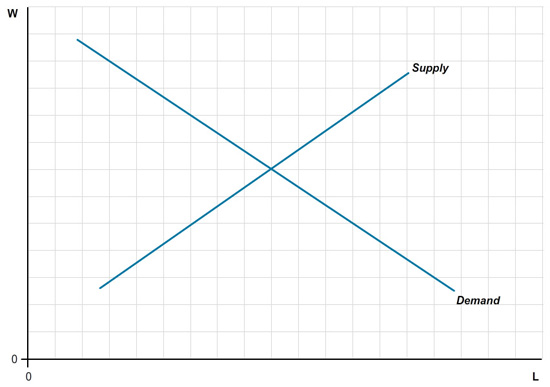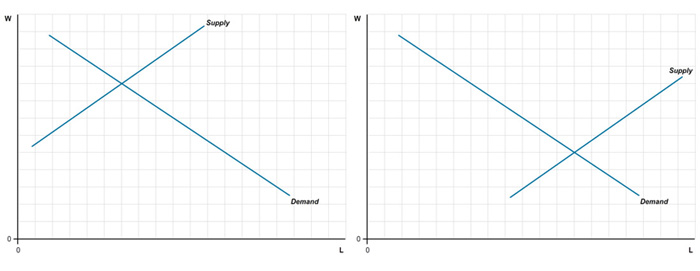Solved Problems
Chapter 11b
TABLE OF CONTENTS
Question 1 of 4
Step 1
Solved Problems
true
true
You must read each slide, and complete any questions on the slide, in sequence.
In this graph, the wage (W) is on the axis and the quantity of labor (L) is on the axis.

3
For any market, the price goes on the vertical axis and quantity goes on the horizontal axis. Here, the price of labor is the wage (W), and the quantity of labor is denoted by L.
Step 2
Suppose that in this labor market, some jobs are restricted to current residents of this city who have lived there for at least one year. Other jobs are open to anyone, regardless of the city of residence.

We would expect the market for jobs for all residents to be depicted on the graph, and jobs for only city residents to be depicted on the graph above.
3
There are fewer city residents as compared to all residents, so the supply of workers is lower. As a result, the supply curve for city residents is further left as shown in the left-hand graph. Likewise, the labor pool is larger for all residents, so the supply curve for all residents is further right as shown in the right-hand graph.
Step 3
The equilibrium wage would be in the market that allows city residents only, and the number of workers would be than when both groups were combined.
3
As is typical for markets where supply is reduced, quantity is lower and the price is higher. In this example, city residents are given preference, and they are rewarded with more money.
Step 4
The equilibrium wage would be in the market that allows all residents, and the number of workers would be than when only residents are included.
3
As is typical for markets where supply is increased, quantity is higher and the price is lower.